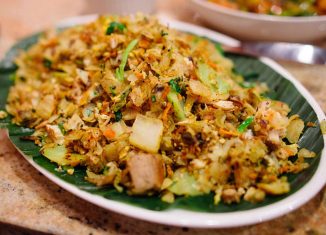
1. Kottu
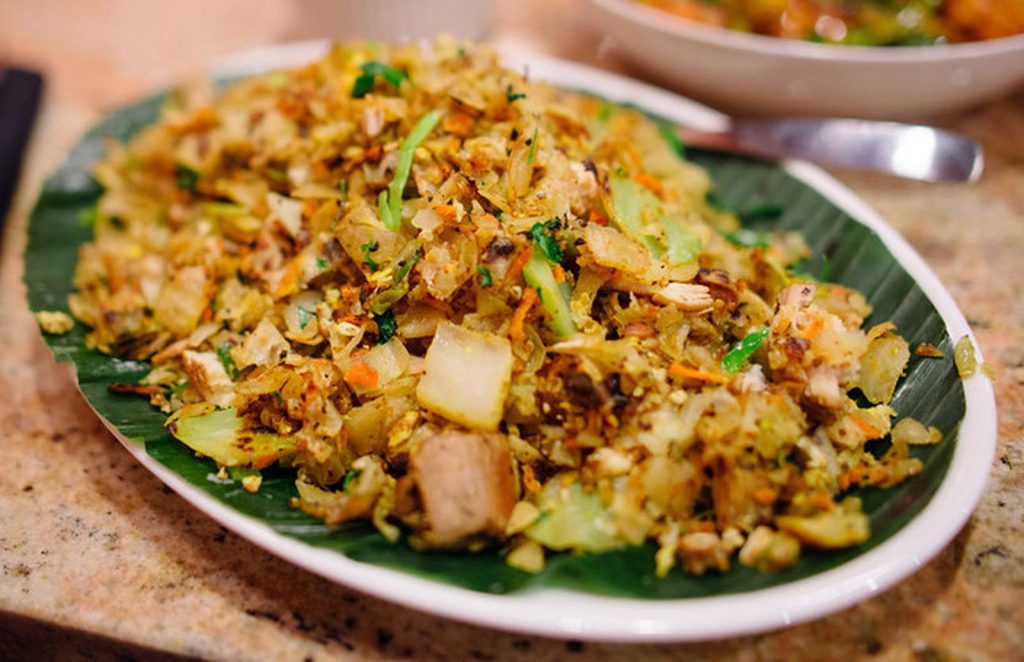
Kottu, also known as Koththu Rotti or Kothu Roti (meaning chopped bread), is a Sri Lankan dish made from godhamba roti (a type of Sri Lankan roti) and vegetables, egg and/or meat, and spices. The bread is described as similar to the type found in the south Indian kothu parotta and roti canai, with the former dish overall being very similar to the Koththu Rotti. A common dinner dish, kothu has become popular in cities with a significant Sri Lankan diaspora population, such as Toronto and New York City’s Little Sri Lanka neighborhood.
Generally, the consumer chooses what and how much of the ingredients are included if someone else is preparing. Kothu is considered the Sri Lankan equivalent of the hamburger, in terms of its popularity.
2. Lamprais

Lamprais, commonly known as lump rice, is very popular in Sri Lanka. Lamprais is derived from the Dutch word lomprijst, which loosely translated means a packet of food. It consists of two special curries (a three meat curry – beef, pork and lamb – and ash plantain with aubergine), seeni sambal, belacan, frikadeller meatballs, a deep fried boiled egg and rice boiled in stock, all of which is wrapped in banana leaves and steamed in an oven.[4] Although the original recipe includes a mixture of meats you can make it with a single meat or a vegetarian version with TVP or grilled cubed veggie burgers.
3. Kukul mas curry (chicken curry)
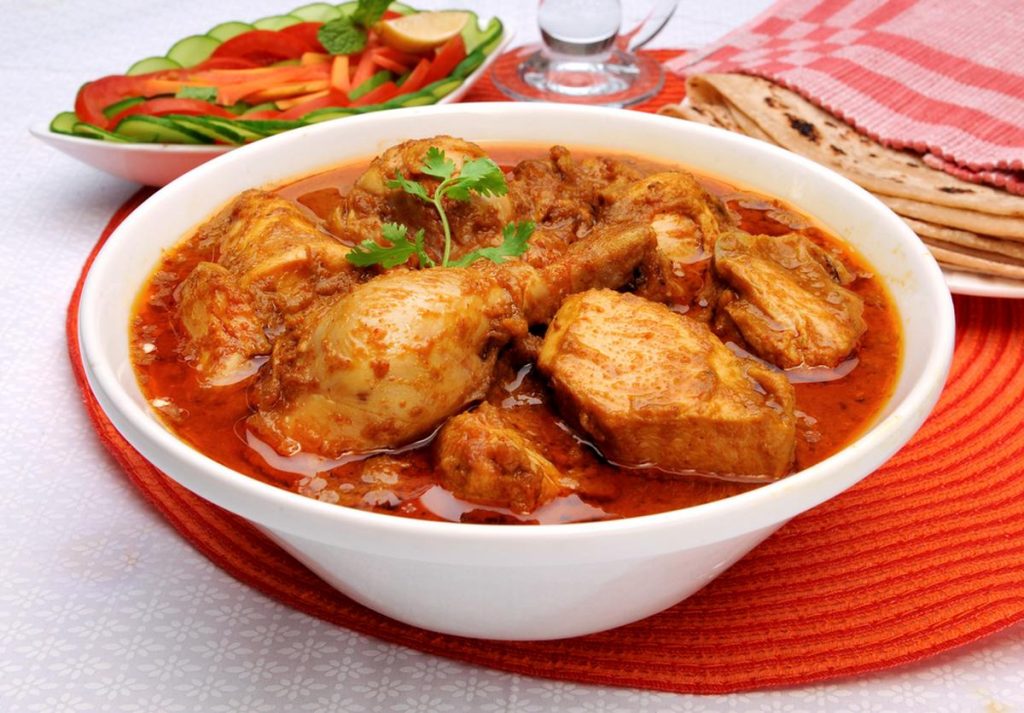
Rice and curry is the king of Sri Lankan cuisine. There’s a slew of variations depending on what region of Sri Lanka you visit, but the structure is usually the same: spices tempered in hot oil before being combined with chicken, fish or other meat, and coconut milk – essential for the oh-so-delicious curry sauces. Combine with rice or roti, and you’re on to a surefire winner.
4. Paratha Flatbread
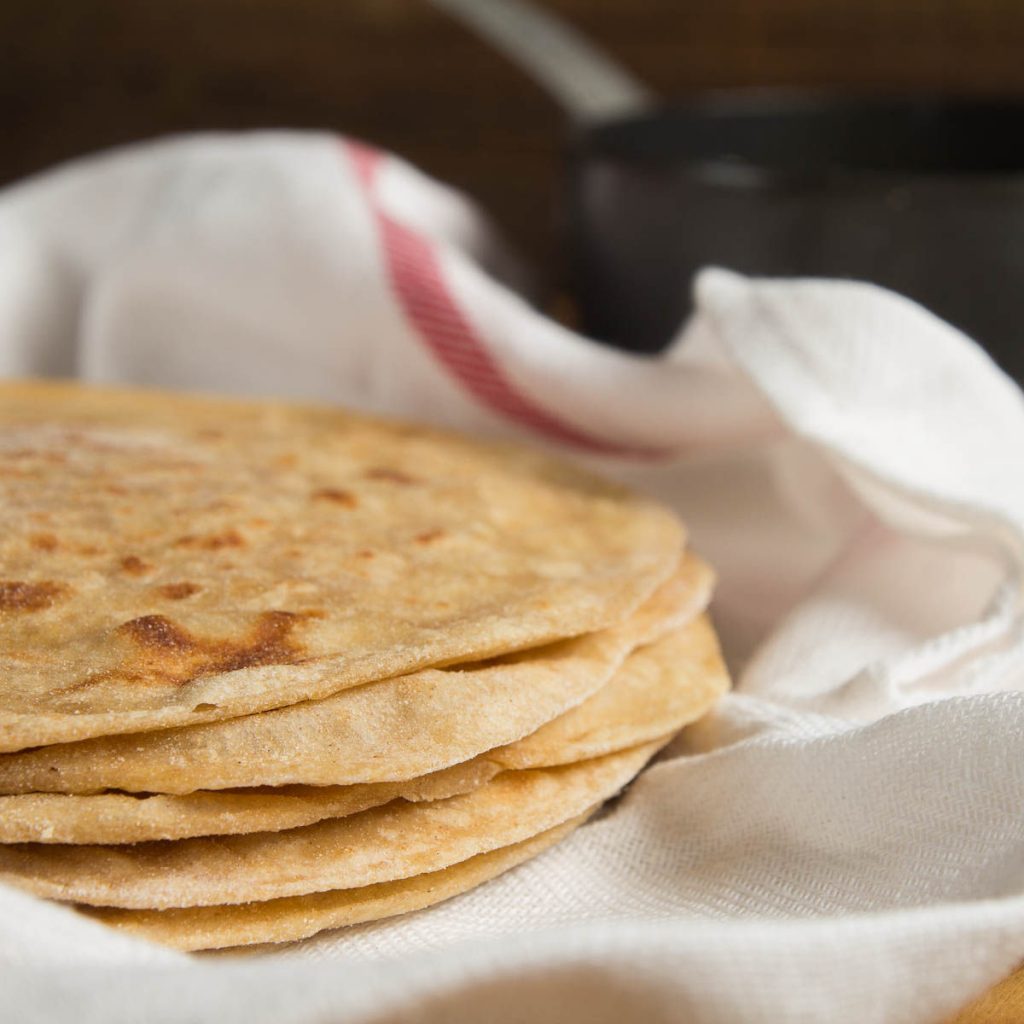
A paratha is a flatbread that originated in the Indian subcontinent. It is still prevalent throughout Pakistan, India, Nepal and Burma, where wheat is grown and is the traditional staple of the area. Paratha is an amalgamation of the words parat and atta which literally means layers of cooked dough.
5. Hoppers (appa or appam)
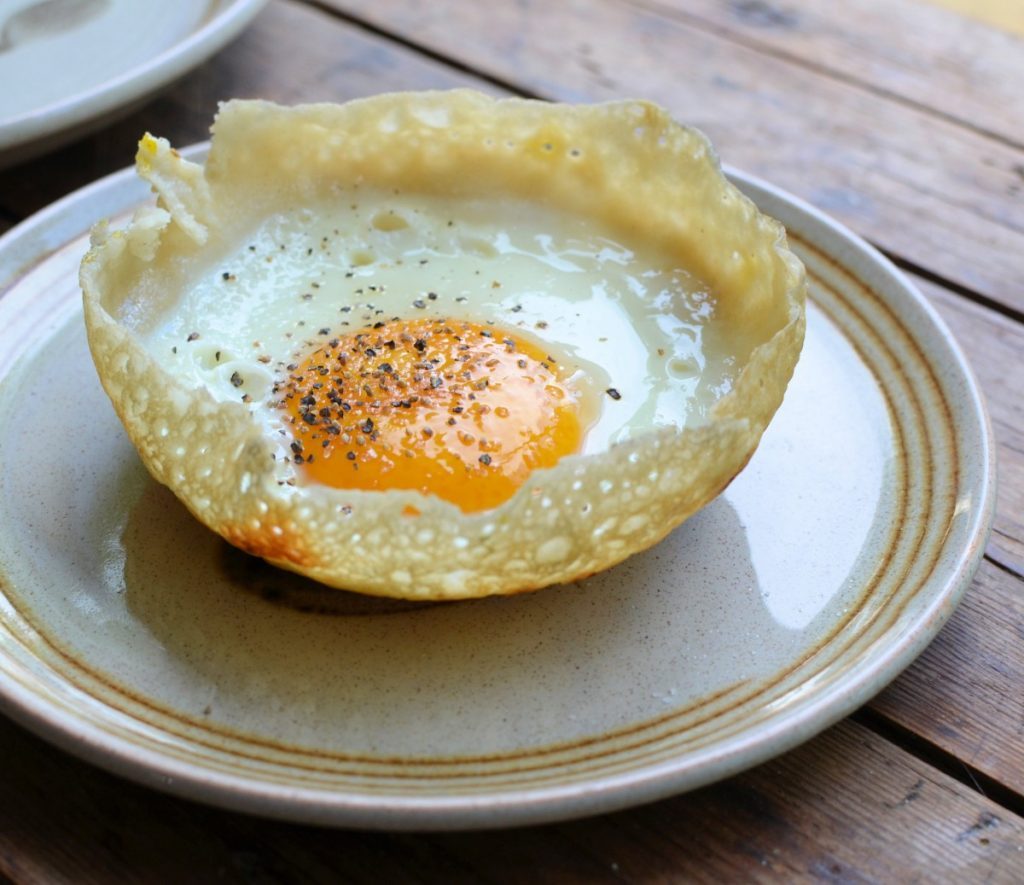
Hopper (Appam) is a type of pancake made with fermented rice batter and coconut milk. It is eaten most frequently for breakfast or dinner. Egg Hoppers are same as plain hoppers, but an egg is broken into the pancake as it cooks
6. Fish Curry and Mixed Rice
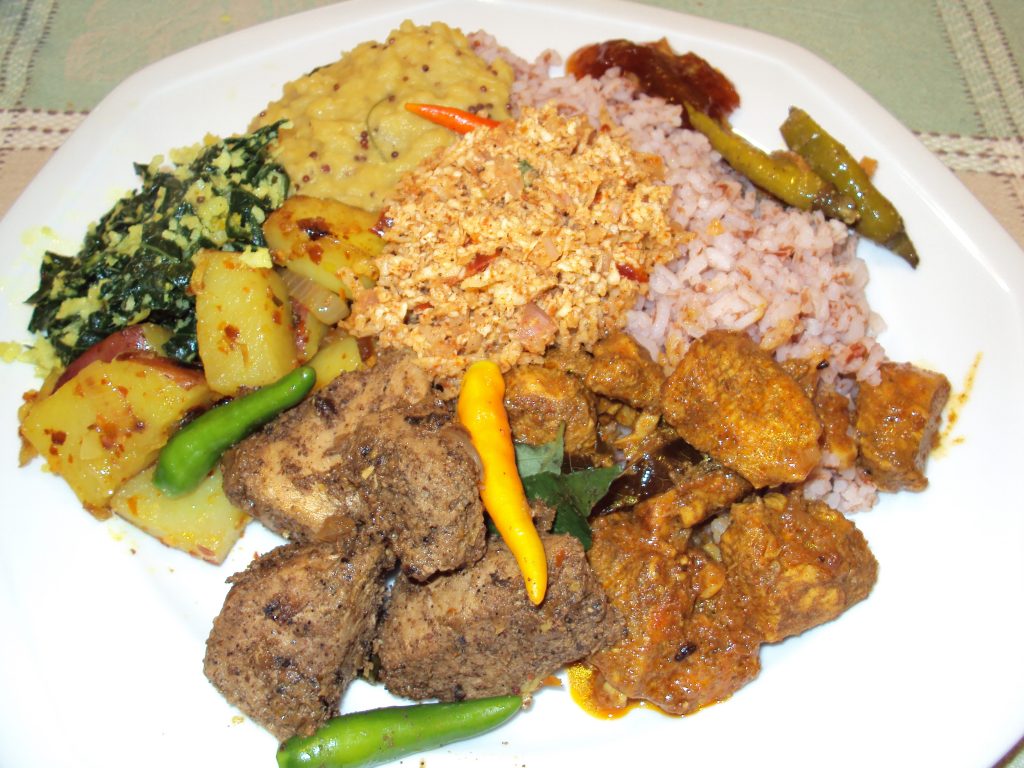
7. Deviled Sweet and Sour Chicken
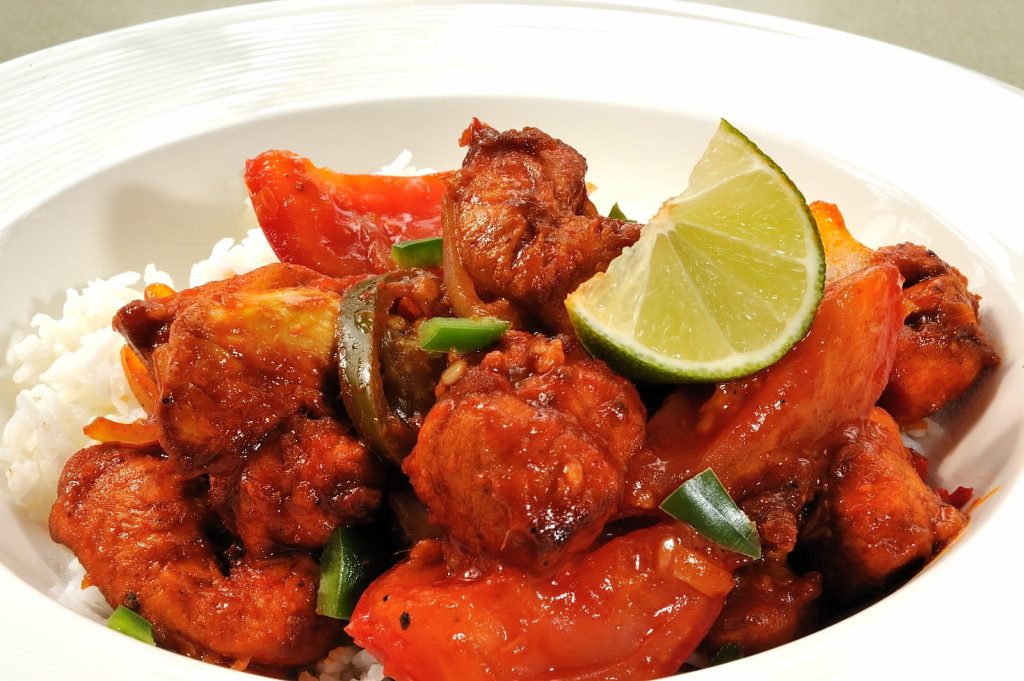
8. Polos (green jackfruit curry)
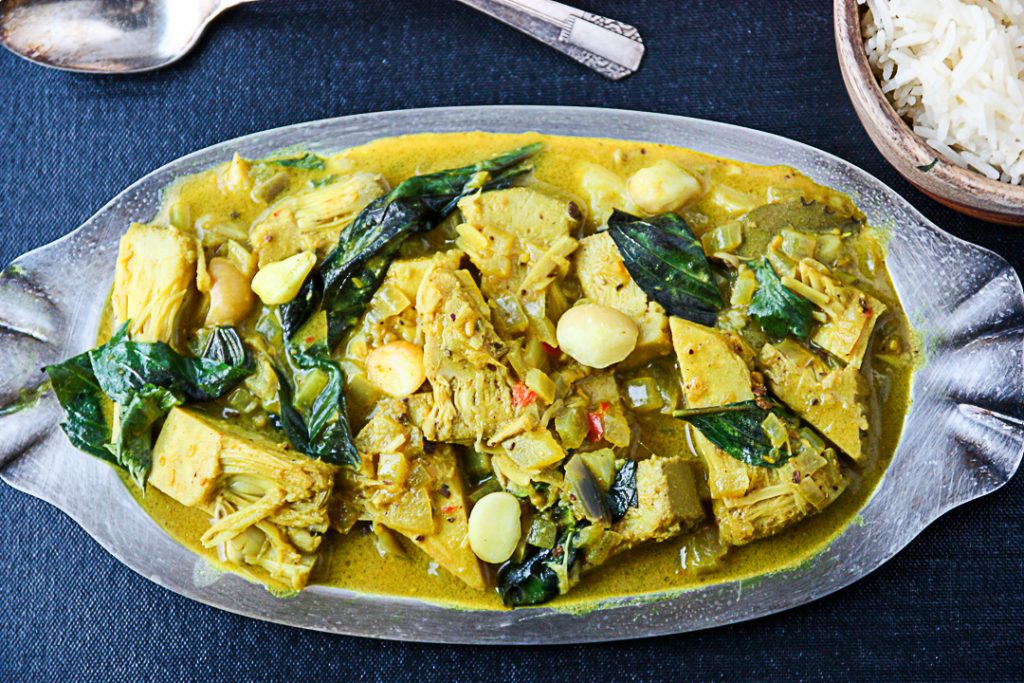
9. Wambatu moju (eggplant/brinjals pickle)
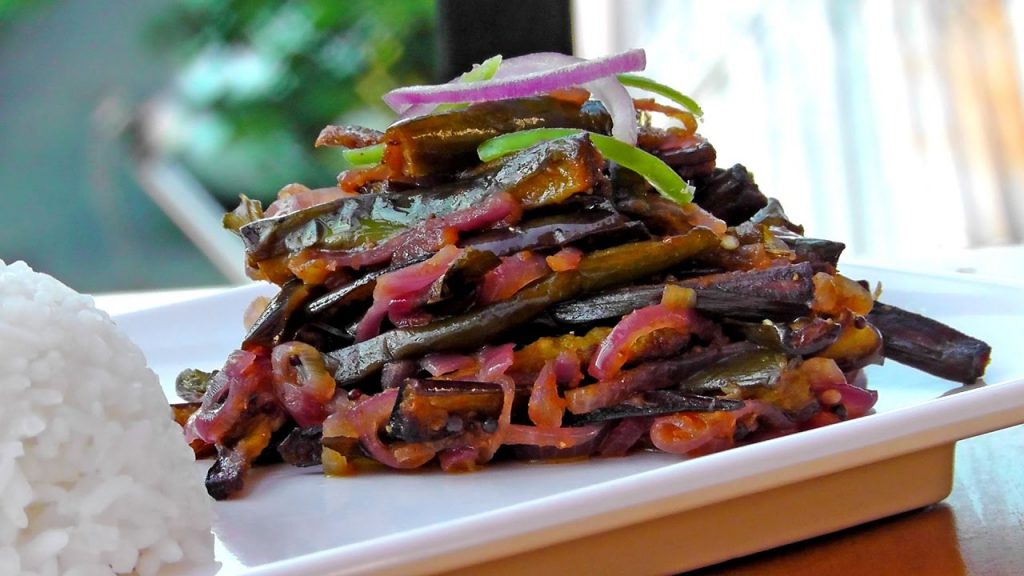
Served mostly with rice and curries,wambatu moju is an extremely flavorful candied eggplant (brinjals) pickle.
10. Gotu kola sambol (pennywort salad)
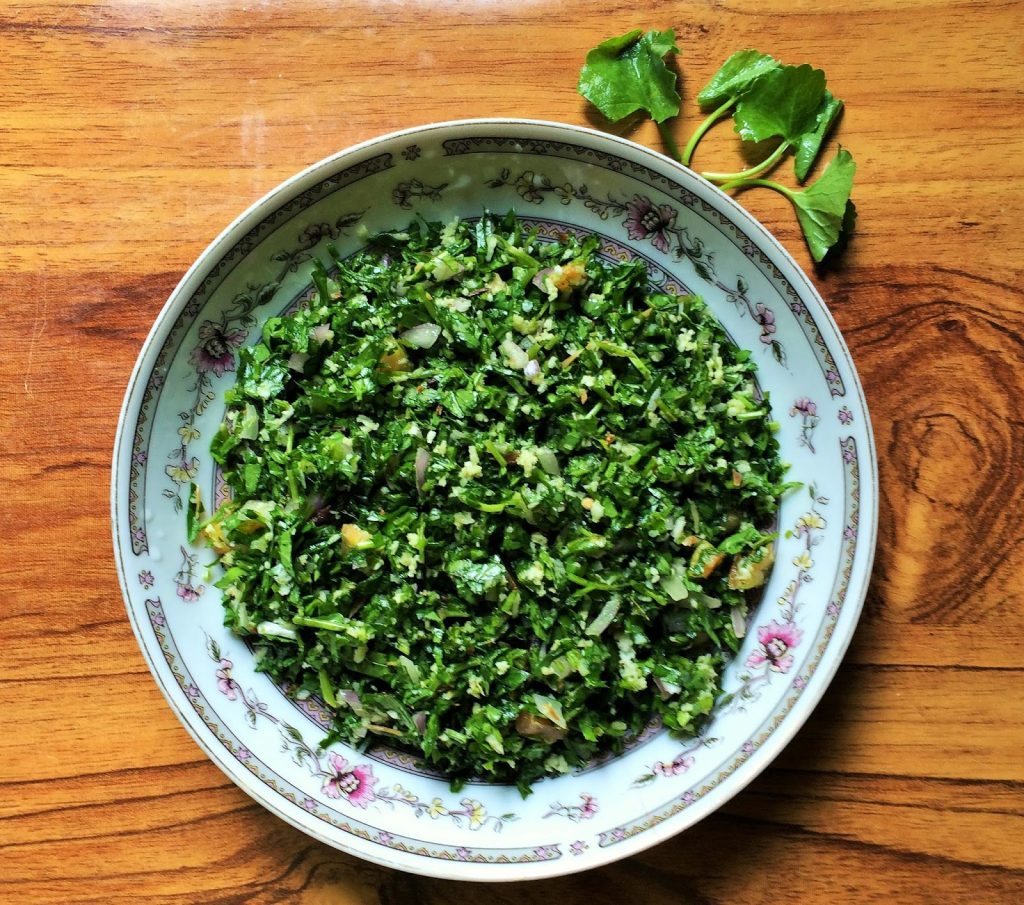
Gotukola is a herb with many medicinal properties & widely used in Ayurveda. The sambol is a refreshing &nutritional salad. Its a great idea to include Gotukola sambol into your weekly diet. Its a easy, quick and tasty salad that goes well with steaming bowl of rice.
11. Beetroot Curry
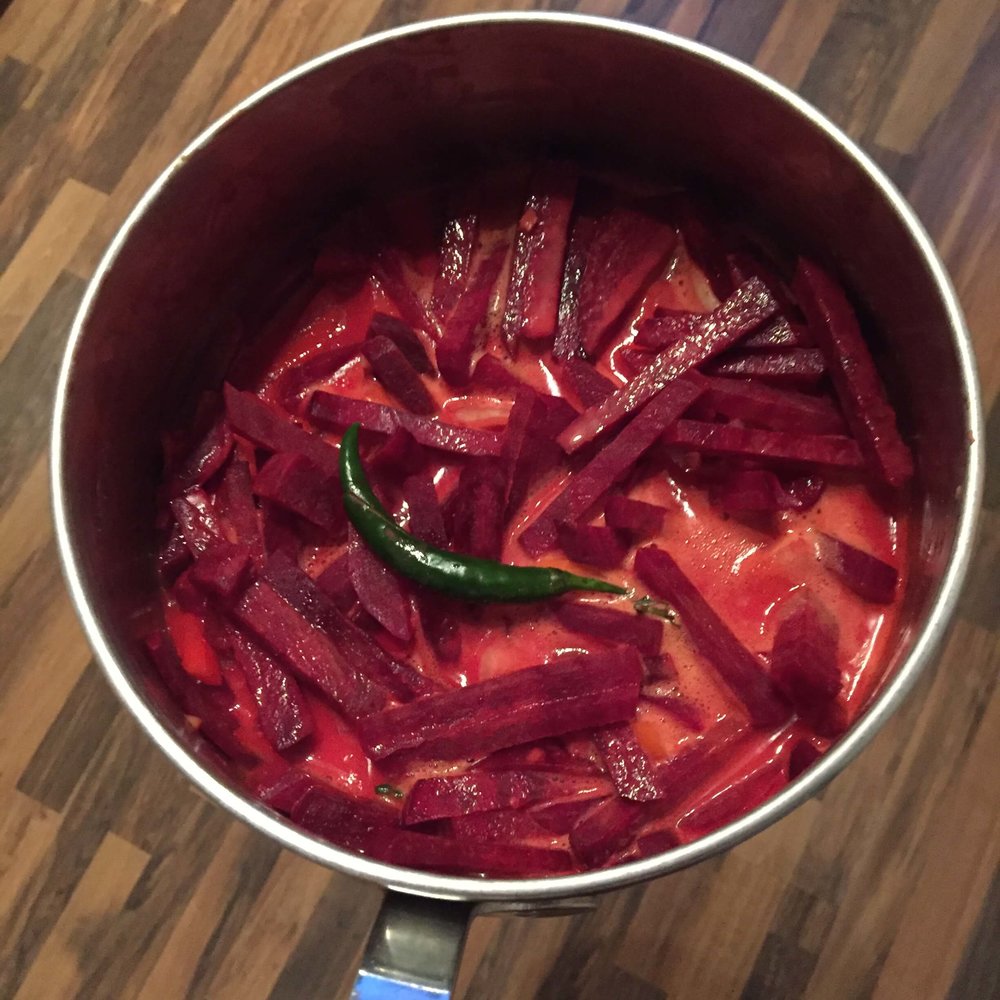
12. Kiribath with lunu miris

Lunumiris is a spicy Sri Lankan sambal paste served as a condiment. It consists of chili pepper, red onions, Maldive fish, sea salt, black pepper and lime juice, usually ground with mortar and pestle or grind stone. However red onions aren’t used when making katta sambal, and red onions is used in lunu miris so lunu miris has a more wet texture than katta sambal.
Kiribath (milk rice) is a traditional Sri Lankan dish made from rice. The word is a compound with a transparent meaning in the Sinhala language, where kiri (කිරි) means “milk” and bath ( බත්) means “rice”. Kiribath can be considered a form of rice pudding. The dish is prepared by cooking rice with coconut milk, hence this name.
13. Pol Sambol (coconut relish)
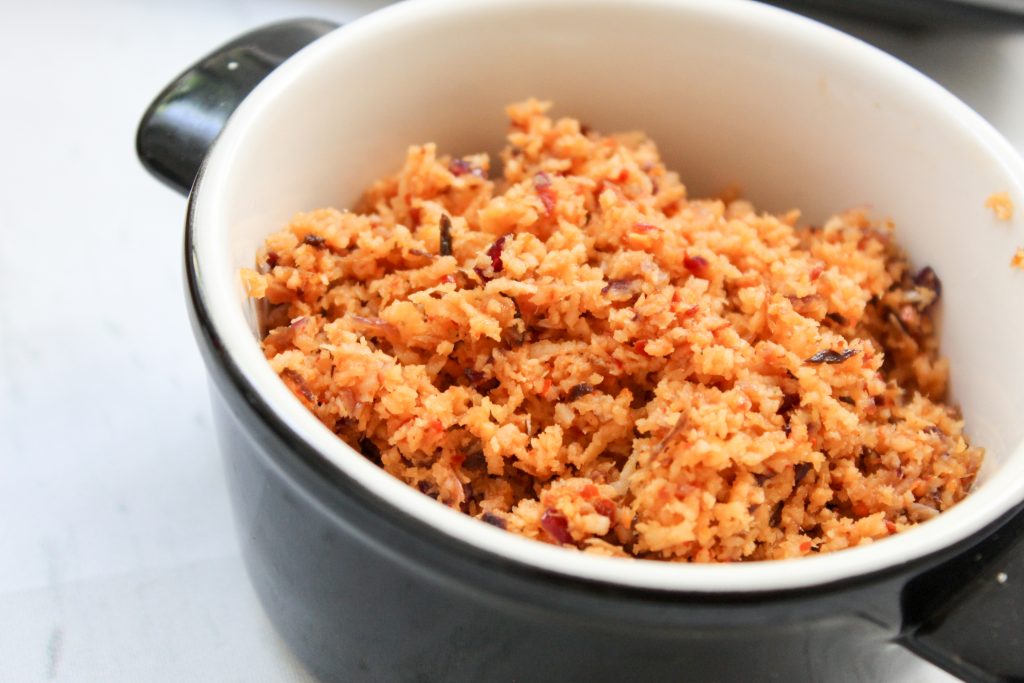
Pol sambola (coconut sambol) is a traditional Sri Lankan dish made from coconut, mostly used as an accompaniment with rice, string hoppers, hoppers, and many more meals.
14. Parippu (dhal curry)
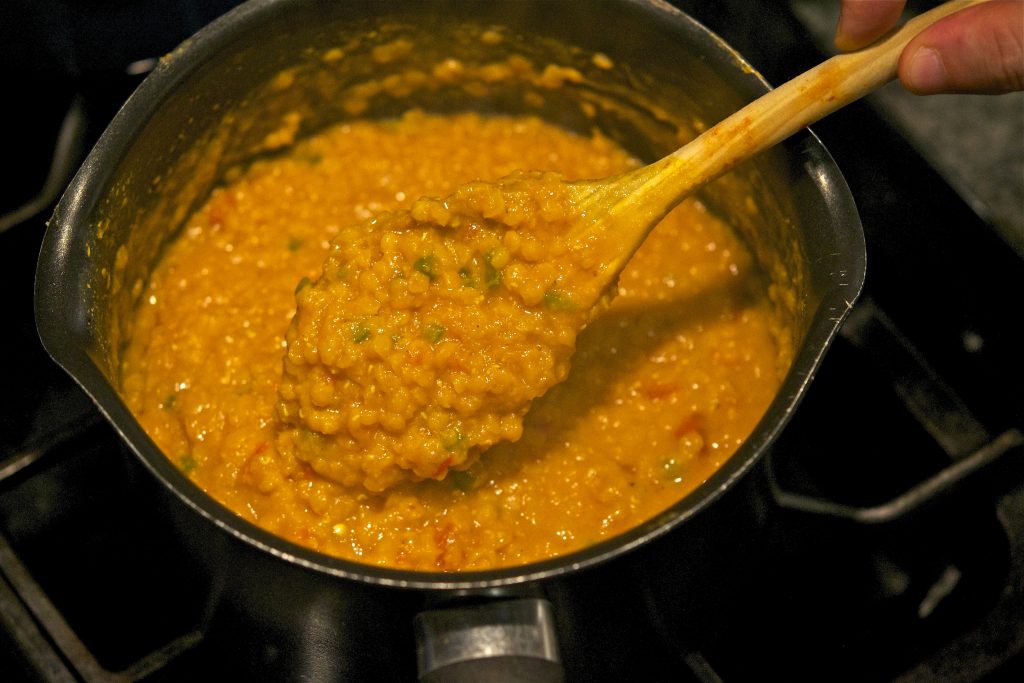
Curry made of lentils and coconut milk.
15. King Coconut
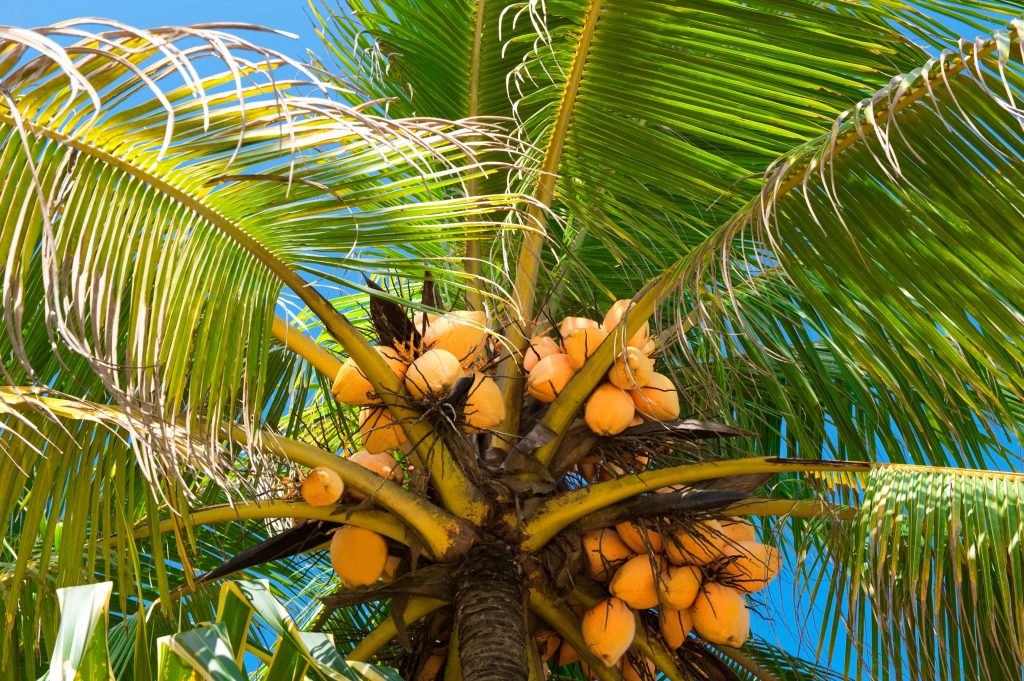
King coconut (Cocos nucifera) is a variety of coconut, native to Sri Lanka where it is known as Thembili (Sinhala: තැඹිලි). Sweeter than regular coconuts, there are several sub varieties of the king coconut-the most common being the “red dwarf” (kaha thambili, commonly referred to as gon thambili). The other variety is “ran thambili”, a smaller variety containing about forty nuts in a bunch. The king coconut tree is shorter than coconut trees, and are found commonly growing wild in many areas of the country.
16. Wood apple
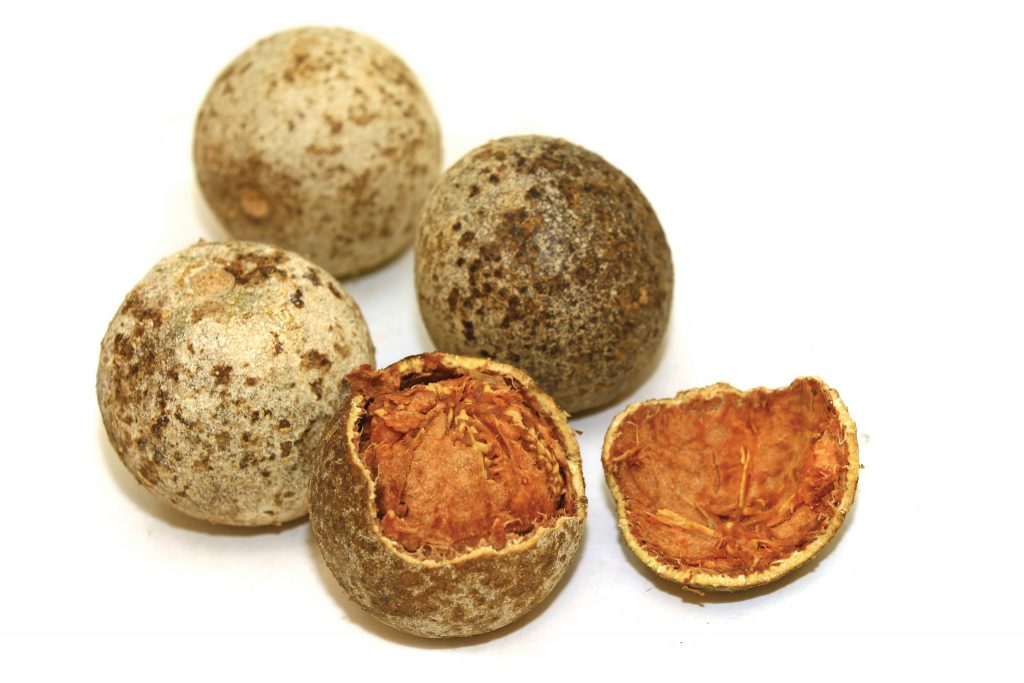
Limonia acidissima (Wood Apple) is a large tree growing to 9 metres (30 ft) tall, with rough, spiny bark. The leaves are pinnate, with 5-7 leaflets, each leaflet 25–35 mm long and 10–20 mm broad, with a citrus-scent when crushed. The fruit is a berry 5–9 cm diameter, and may be sweet or sour. It has a very hard rind which can be difficult to crack open, it appears greenish-brown in colour from outside and contains sticky brown pulp and small white seeds. The fruit looks similar in appearance to the Bael fruit (Aegle marmelos). It contains considerable amount of protein, carbohydrate, ferus, fat, calcium, Vit-B & C etc. 100gms of ripe fruit pulp contains upto 49 KCal.
17. Rice & Curry
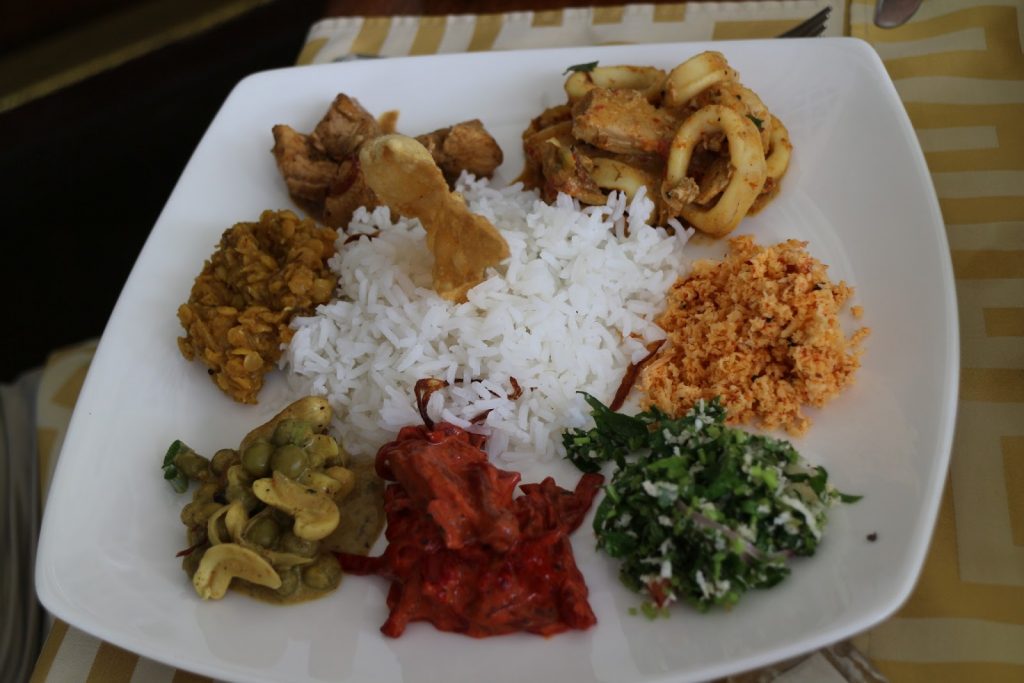
The central feature of Sri Lankan cuisine is boiled or steamed rice, served with a curry of fish, chicken or mutton, along with other curries made with vegetables, lentils, or fruits. Dishes are accompanied by pickled fruits or vegetables, chutneys, and sambols. coconut sambol is especially common, a paste of ground coconut mixed with chili peppers, dried Maldive fish, and lime juice.
18. Full Cream Curd and Sweet Syrup

Buffalo curd is a traditional type of yogurt prepared from buffalo milk. It is popular throughout south Asian countries such as Bangladesh, India, Nepal, Pakistan, Sri Lanka, etc. Buffalo milk is traditionally better than cow milk due to its higher fat content making a thicker yogurt mass. Mostly clay pots are used as packaging material for Buffalo curd. The naming curd is traditionally used in the Indian subcontinent to refer to yogurt.
Read more about Sri Lankan cuisine here


